In September, your board of directors decided on a capital credit retirement for 2021 in the amount of $2.7 million. This will take the cooperative past $30 million returned to member-owners since 2008. This is a historic milestone.
Member-owners using electricity in 2003, 2004, and/or 2020 will receive a portion of this retirement. If you are currently an active member taking service from us, you will see a credit on your December bill. If you have any questions about your capital credit retirement, just give our member services department a call.
When the cooperative has positive margins/profits, they belong to each member-owner on a percentage of total revenue basis. The cooperative uses them for purchasing poles, wires, trucks, and other essential equipment for a period of time before giving them back. This reduces our borrowing and the associated interest expense, resulting in more affordable monthly electric bills.
Typically, an electric cooperative will retire capital credits on a 25-year rotation. There is no magic to the number; rather, it is just a common goal. Cherryland’s aggressive return of cash to our member-owners for the past 13 years has us at a 19-year rotation. This means that we are six years ahead of the average curve.
Everyone at your cooperative is proud of our strong financial position while returning this historic amount of dollars. We are going to strive to continue the practice but do see issues on the horizon that may make it harder in the years ahead.
First, we have inflation causing increases in everyday expenses like gasoline, poles, wages, and interest on system improvements (and everything we buy, really). Other than the power cost increase I informed people about last month, the basic electric rates we charge have not increased since April 2018. We may get through another year, maybe two, but a general rate increase due to rising costs is inevitable.
Second, your board has a goal of keeping cooperative equity above 40%. We can grow equity quickly and easily by not giving back capital credits. Equity has been hovering around 41% for the last few years. When expenses rise higher than revenue increases, equity falls. Equity is a balancing act that we don’t have complete control over.
Third, we are looking into a new generation of meters to better serve you. The present generation was installed in the 2006–2008 time frame. Changing out every meter on our system will be an investment of more than $6 million, which will be on top of our annual system investments of $3–$5 million. This project could begin in 2023 or 2024. The more cash we have at that time, the less we will have to borrow.
As you can see, everything is interconnected. One decision has an impact on another and another. We always check the numbers against our mission statement—“Member driven. Safe. Reliable. Affordable.” The question that I ask myself is simple: “Can we retire capital credits AND live our mission statement?”
Passing the $30 million mark in money returned is a historic milestone everyone should take pride in. We just can’t let our pride cloud the core responsibilities of service to every member-owner as we move forward.



This is a great story of a well run rural cooperative.
Job well done, Tony! I appreciate how thorough and transparent Cherryland is especially when it’s run efficiently enough to give back to us member-owners. Thanks for your guidance.
Good job Cherryland! Glad we have you for our electricity provider!
Thank you, the staff and crews at Cherryland Electric for the outstanding service and dedication in providing safe and reliable power year around to this area. I am quite proud of the consistent quality you all have demonstrated year after year. Thanks again.